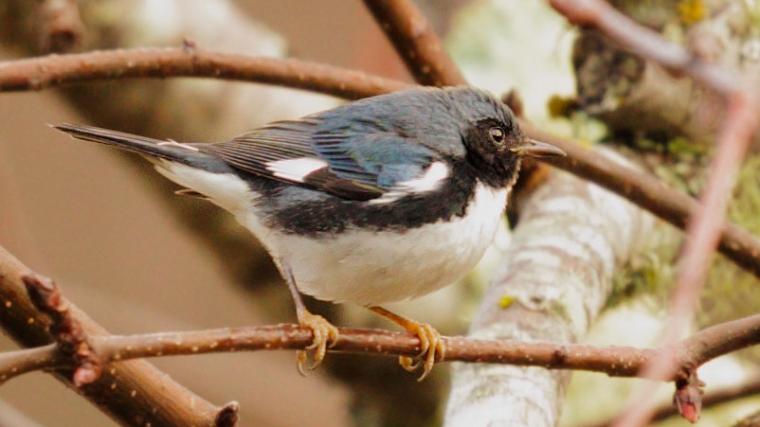
In a nutshell
Climate change has been associated with shifts in phenology, including food sources for some animals. These animals may be negatively affected if they do not have what is called phenotypic plasticity – the ability to match shifts in timing of their food or other resources. For example, some songbirds depend on peak caterpillar availability during the nesting season. If there is a shift in that seasonal peak, where caterpillars are mainly available weeks earlier or later than in previous decades, birds that are not able to match the shift by moving their nesting season may suffer.
The authors of this recent paper studied a 25-year record of black-throated blue warblers in the Hubbard Brook Experimental Forest in New Hampshire, comparing the timing of breeding to both the phenology of its caterpillar prey and the foliage on which the caterpillars feed. This warbler is a migrant that spends its winters in the Caribbean islands and its summer breeding season in the eastern and northeastern United States and Canada. The authors found that these birds have a varied diet, which allows them to be less susceptible to trophic mismatch after arrival at their breeding grounds. The birds likely rely on cues such as temperatures, developing leaves and increasing food abundance to know how long after arrival to start their first nest.
What is special about this study?
The authors used 22 years of plant phenology data collected at Hubbard Brook Experimental Forest. Spring leaf phenology varied among years, and over the study period became earlier by 1.25 days per decade. While the birds’ arrival stayed fairly consistent, nesting phenology for these warblers was well-matched to leaf-out. By measuring the reproductive success of warblers, the authors were able to show that the shifts in leaf-out seen at the forest do not have negative consequences for this species, at least at the present time.
What does this mean for YOU?
Whether you are a bird watcher who enjoys seeing the diversity of tropical migrants, or if you are simply concerned about the potential fallout from increased mismatches in the food web, this article offers some new knowledge about the ability of birds to adapt to a changing environment. This study demonstrated that some birds’ breeding times are sufficiently flexible to take advantage of shifting food resources.
However, these birds can shift their breeding time only so much, and if food resources move earlier than the birds’ arrival at their breeding grounds, they will not have the food resources they need. Many other species are not so flexible in their breeding phenology, or they rely on food resources that have a more defined season peak. These other species are more adversely affected by the shifts in phenology of food resources.
Citation: Lany, N.K., Ayres, M.P., Stange, E.E., Scott Sillett, T., Rodenhouse N.L, Holmes, R.T. 2015 Breeding timed to maximize reproductive success for a migratory songbird: the importance of phenological asynchrony. Oikos 000: 001-011.